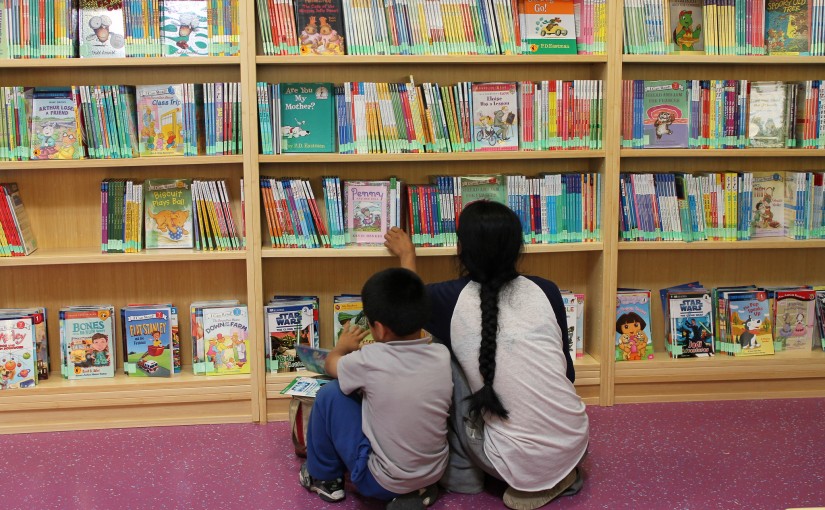For over two decades, growing body of research has shown a close correlation between school libraries and student success. Without these resources, students don’t reach their potential and a greater gap grows between the highest performing children and disadvantaged students
But improving performance doesn’t just come down to resources. One of the biggest factors had nothing to do with the resources available—it was the librarians themselves. Students perform better when certified librarians and support staff are available to help both students and teachers make the most of the library.
When given this support, students’ performance spoke for itself. Just take a look at these stats on student performance from research on the impact of school libraries:
- Across the board, students at schools with full-time librarians are almost three times as likely to have “Advanced” writing scores than those at schools without one. (American Library Association)
- At schools where administrators, librarians and teachers assess the library’s program to teach inquiry-based learning as “excellent,” student consistently less likely to score “Below Basic” in reading and writing. (ALA)
- When a library has flexible scheduling that allows students greater access, the number of students who earn “Advanced” writing scores is four times higher. (ALA)
- A study of schools in Texas found school libraries boosted achievement by 4 percent at the elementary and middle school levels, while high school achievement was boosted by 8.2 percent. (ASCD)
- At schools with a full-time, certified librarian, almost eight percent more students score “Advanced” in reading. (ALA)
- At schools with a full-time, certified librarian and support staff, almost nine percent more students score “Advanced” in reading, compared to having a full-timed, certified librarian alone. (ALA)
- In a Colorado study, at elementary schools with higher collaboration between teachers and school librarians, students scored 21 percent higher on the Colorado Student Assessment Program (CSAP) than students at schools with less collaboration. (Lance, Rodney, & Hamilton-Pennell, 2000—via New York Comprehensive Center [NYCC])
- A study in Indiana showed that when principals emphasized in-service opportunities for collaboration between teachers and school librarians, student test scores went up by 29.5 percent. (Scholastic, 2008, via NYCC)
- The Indiana study also showed that collaboration for curriculum design and instruction delivery increased test scores by 7.8 percent, at every level of education. (Scholastic, 2008, NYCC)
- A 2005 study of Illinois 11th graders correlated higher American College Testing (ACT) scores with increased collaboration between school librarians and teachers. This included activities such as identifying materials, planning lessons and motivating students to read. (NYCC)
- In a review of studies from Alaska, Colorado, Oregon, and Pennsylvania, library factors outweighed the effects of other factors including computers per student, teacher experience, and teacher turnover ratio. (ASCD)
- These are only a few studies that corroborate the significant role of school libraries—21 state studies confirm school librarians support student achievement. (ALA)
A well-staffed school library isn’t a Band-Aid—a lot of the achievement gap is still attributed to other factors, particularly socioeconomic differences. But having a library at school can help bridge that gap and give students a boost for academic achievement.
However, unsurprisingly, study after study has shown that the students who are most in need of academic improvement are the ones who benefit the most when supported by a school library. Support and utilize school libraries and their resources to help students succeed.

Leave a Reply
You must be logged in to post a comment.